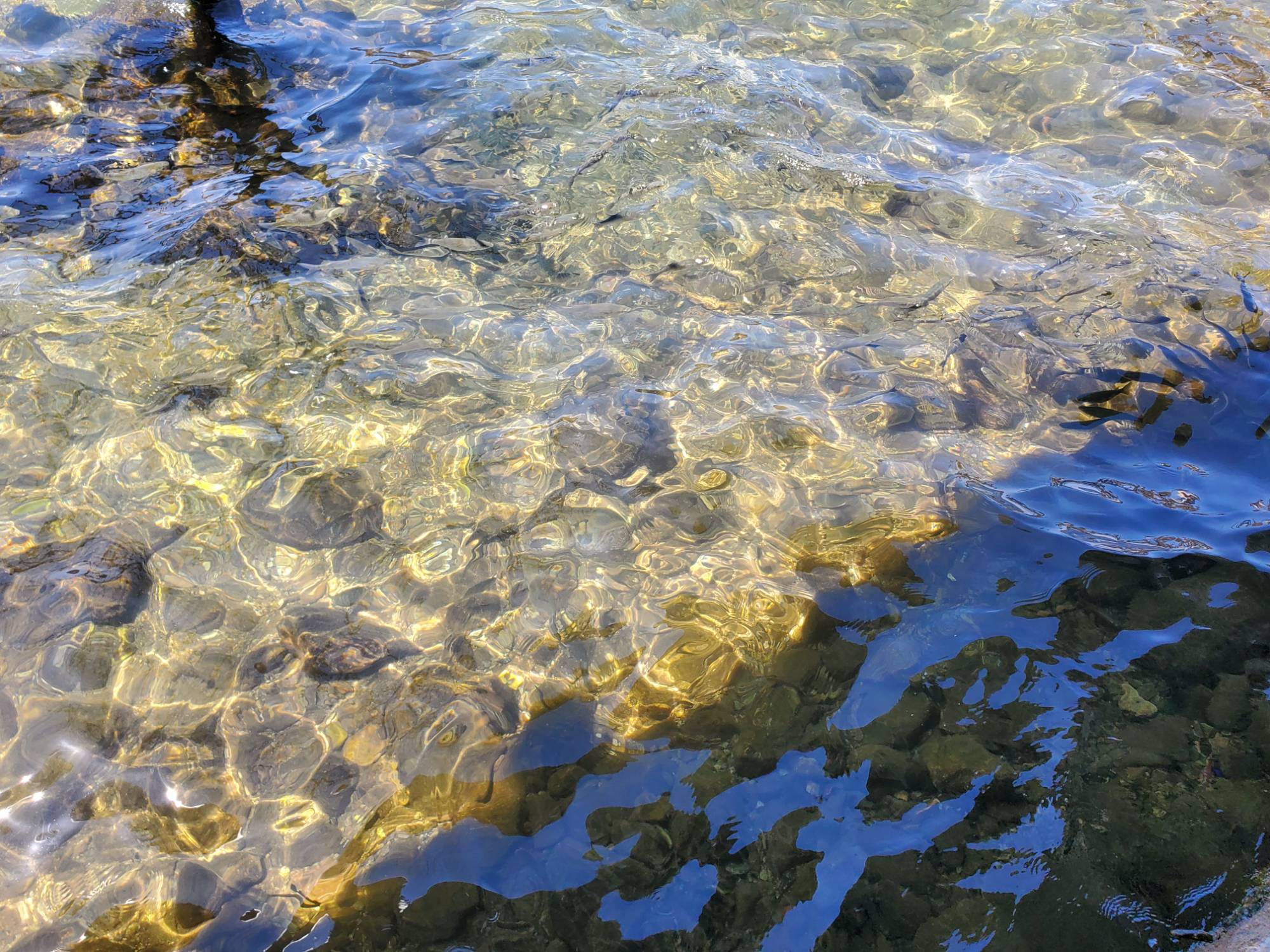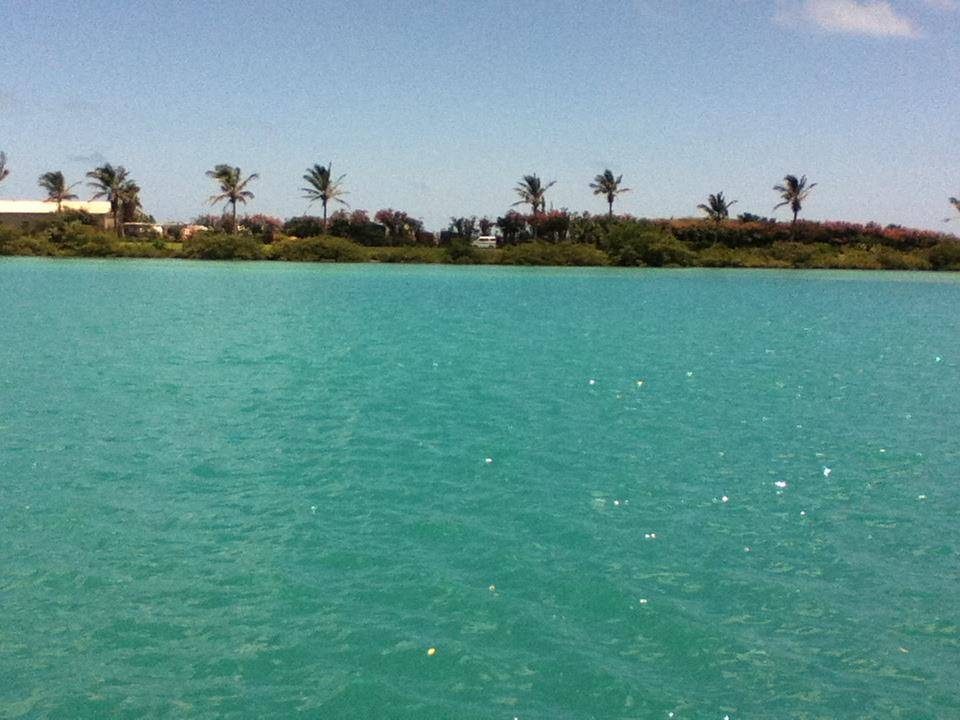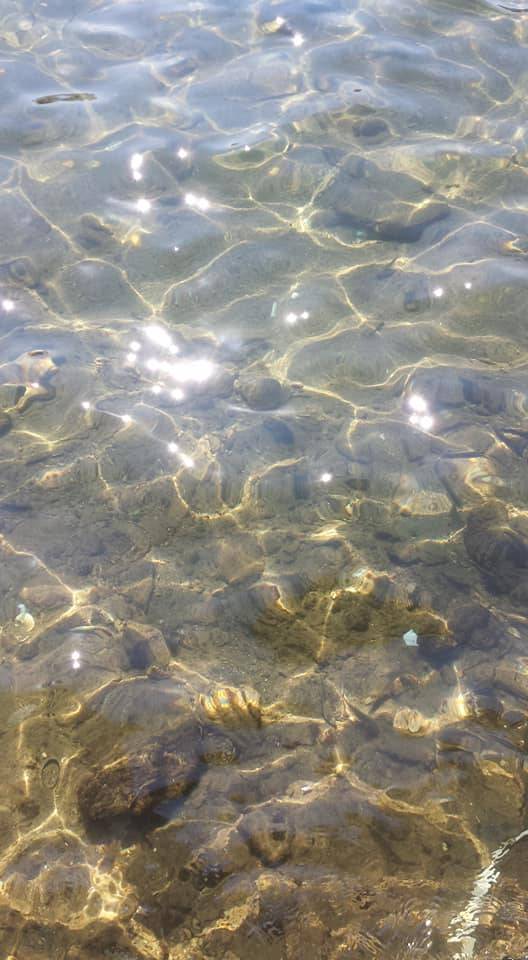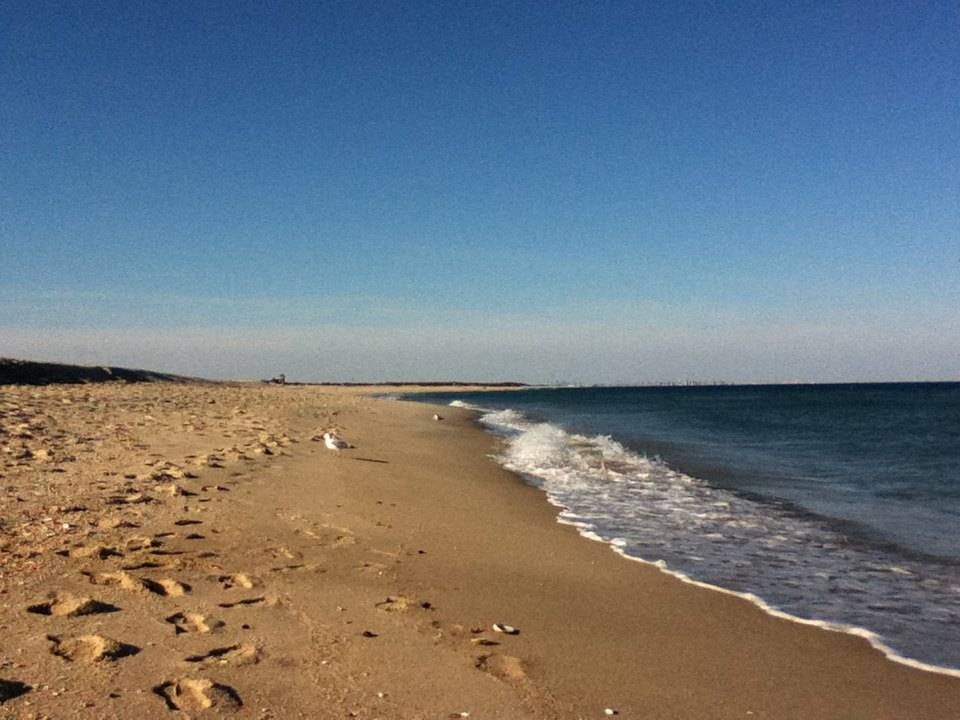Active Projects at MCL
Pick a Topic
- Scholars and Proxies at MCL
- Ocean Acidification - Ocean/Atmosphere Carbon Exchange
- Calibrating Paleothermometers
- Using Stable Isotopes to Infer Changes in Ocean Productivity, Sea Surface Structure, and Sea Level
- Ocean/Climate Education Research
- Developing Carbonate Preservation Proxies
- Quantifying the Flux of Sediments to the Deep Sea (Rain Ratio)

Proxies and Scholars at MCL (Current and Former)
[1690747596].jpg)
There is a planktonic foraminifer in the center of this image - a single-celled amoeba-like creature that floats in ocean surface waters and tends to make a shell for itself out of calcium carbonate (calcite or lime). Fortunately, shells of foraminifers are almost never chemically pure. It is the impurities trapped in the shells that paleoclimatologists use as proxies to reconstruct past oceanography and past climate. This image depicts the foraminifer-based proxies studied at MCL and the scholars in addition to Figen Mekik who are using or have used these proxies. Note each proxy indicates something different about the ocean/climate system. The symbol, δ, represents the ratio of stable isotopes of the depicted elements with the heavier isotope in the numerator.

Ocean Acidification - Ocean/Atmosphere Carbon Exchange
Goals: The exchange of carbon between the ocean and atmosphere serves as a global buffering mechanism regulating atmospheric carbon dioxide concentration. A result of this regulation can be ocean acidification at times when carbon dioxide concentration in the atmosphere is high. For example, modern excessive emissions of carbon to the atmosphere from industrial practices is actively causing seawater to become more acidic, even at great water depth.
MCL investigates ocean acidification and the opposite, ocean alkalization, events in Earth's recent past. Our main goal is to explore the imprint left in ocean carbonates from these events to understand the lateral and temporal extent of the events. Understanding the extent of these events in space and time in Earth's past serves as an analog for what to expect with modern and future ocean acidification events.
Results: We found that the expected ocean alkalization event at the transition from the last Glacial to the modern Interglacial (called the deglaciation) is easily recognizable in deep sea sediments, except in some sediment cores from equatorial regions of high surface ocean productivity. High productivity adds excessive organic carbon into sediments causing dissolution of carbonates even though ocean waters were more alkaline during the deglaciation compared to today or to the Glacial. The imprints of this alkalization event are also missing in equatorial cores from the Atlantic Ocean. The competition between deep ocean water masses of different corrosiveness to carbonates in the Atlantic Ocean accounts for the lack of the expected carbonate preservation maximum (resulting from the expected ocean alkalization event) in sediments corresponding to the deglaciation (transition time between the Glacial and modern Interglacial).
MCL Scholars Involved: Hugo Rainey, Figen Mekik
Publications from MCL: Mekik, A. F., R. Anderson, P. Loubere, R. François, and M. Richaud. 2012. The Mystery of the Missing Deglacial Carbonate Preservation Maximum, Quaternary Science Reviews, Vol. 39, p. 60-72. doi:10.1016/j.quascirev.2012.01.024.
Calibrating Paleothermometers
Goals: A paleothermometer is a proxy, a substitute measurement, for temperature. Paleo-temperature proxies are the backbone of reconstructing the climate and oceanography of Earth's past. The oldest and best developed paleotemperature proxy is the ratio of stable isotopes of oxygen, oxygen-18 to oxygen-16 (δ18O). Another paleotemperature proxy used on marine samples is the ratio of Mg to Ca, specifically in shells of foraminifera. There are many other marine paleotemperature proxies, but these two are among the ones used and calibrated in MCL.
Results: MCL has been focused on comparing calibrations of both of these proxies among multiple sample sets and calibration equations. Currently, MCL scholars are working on developing global calibrations for multiple species of planktonic foraminifera.
MCL Scholars Involved: Michael Grieb, Jacob Dunwoody, John Jachalke, Jenna Barrett; Sarah Clark, Matthew Collins, Ian Winkelstern, Figen Mekik.
Publications from MCL:
- Mekik, F. and Winkelstern, I., 2020. Field testing the fidelity of δ18O and δ13C in reconstructing upper ocean hydrography. Paleoceanography and Paleoclimatology, https://doi.org/10.1029/2020PA003880.
- Rongstad, B., Marchitto, T., Marks, G., Koutavas, T., Mekik, F., and Ravelo, A., 2019. Investigating ENSO-related temperature variability in equatorial Pacific core-tops using Mg/Ca in individual planktic foraminifera, Paleoceanography and Paleoclimatology, https://doi.org/10.1029/2019PA003774.
- Mekik, A. F., 2018. Do proxies agree? δ18O, δ13C and Mg/Ca from tests of Neogloboquadrina dutertrei in the eastern equatorial Pacific, Geochimica et Cosmochimica Acta. doi: 10.1016/j.gca.2018.03.005
- Mekik, A. F., R. François, and M. Soon, 2007. A novel approach to dissolution correction of Mg/Ca paleo-thermometry in the tropical Pacific, Paleoceanography, 22, PA3217, doi:10.1029/2007PA001504.
- Mekik A. F., and R. François, 2006. Tracing deep sea carbonate dissolution: Agreement between the G. menardii fragmentation index and elemental ratios (Mg/Ca and Mg/Sr) in planktonic foraminifers. Paleoceanography, 21, PA4219, doi:10.1029/2006PA001296.


Using Stable Isotopes to Infer Changes in Ocean Productivity, Sea Surface Structure, and Sea Level
Goals: Stable isotopes of various elements tell different stories about the ocean's past and ocean/atmosphere interaction. For example, stable carbon isotopes from shells of foraminifera can be used as a tracer for water masses or as a paleo-productivity indcator; stable ntrogen isotopes tell us about relative nutrient utilization, and stable oxygen isotopes aren't only a paleo-temperature proxy but also an indicator of ice volume and therefore sea level.
Results: We have used stable carbon and oxygen isotopes from various species of planktonic foraminifers to reconstruct surface ocean hydrography. Mekik participated in a study using stable nitrogen istopes in cores from the eastern equatorial Pacific to explore rates of ocean water column denitrification since the Last Glacial Maximum. The results for these topics are a bit technical and available in publications listed below for readers interested in such things.
MCL Scholars Involved: Michael Grieb, Jacob Dunwoody, John Jachalke, Ian Winkelstern, Figen Mekik.
Publications from the Lab:
- Studer, A., Mekik, F., Ren, H., Hain, M., Oleynik, S., Martinez-Garcia, A., Haug, G and Sigman, D. 2021. Foraminifera-bound nitrogen isotope evidence for similar rates of water column denitrification in the eastern equatorial Pacific during the last ice age and the Holocene. Paleoceanography and Paleoclimatology. DOI: 10.1029/2020PA004063
- Mekik, F. and Winkelstern, I., 2020. Field testing the fidelity of δ18O and δ13C in reconstructing upper ocean hydrography. Paleoceanography and Paleoclimatology, https://doi.org/10.1029/2020PA003880.
- Mekik, A. F., 2018. Do proxies agree? δ18O, δ13C and Mg/Ca from tests of Neogloboquadrina dutertrei in the eastern equatorial Pacific, Geochimica et Cosmochimica Acta. doi: 10.1016/j.gca.2018.03.005
Ocean/Climate Education Research
Goals: This is a 13-year study exploring what undergraduates in a general education course come into the course knowing about climate science; and what they learn throughout the course.
Results: The results of this study have not been published yet, but we will give away that students come into the course having some foundational knowledge of climate science, but they also bring many misconceptions with them.
Publications from the Lab: It's in the works!


Developing Carbonate Preservation Proxies
Goals: Calibrating proxies that quantify calcite and aragonite preservation in deep sea sediments has been a challenging problem for oceanographers for centuries. It is an important endeavor because quantifying the ocean's capacity to buffer atmospheric carbon dioxide by dissolving carbonates gives us ideas about what to expect with ocean acidification from current greenhouse gas emissions.
Results: The Mekik Lab developed a carbonate preservation proxy called the Globorotalia menardii Fragmentation Index (MFI) which is calibrated against model based estimates of percent calcite dissolved at any spot on the ocean floor. We are now busy developing an aragonite preservation proxy, and boot-strapping the two proxies together.
MCL Scholars Involved: Hugo Rainey; Michael Wicker, Lisa Raterink; Mary McHugh (Russo); Nathan Noll, Figen Mekik
Publications from MCL:
- Mekik, A. F., N. Noll,* and M. Russo*, 2010. Progress Toward a Multi-Basin Calibration for Quantifying Deep Sea Calcite Preservation in the Tropical/Subtropical World Ocean, Earth and Planetary Sciences Letters doi: 10.1016/j.epsl.2010.08.024.
- Mekik, A. F. and L. Raterink*, 2008. Effects of surface ocean conditions on the quantification of deep sea calcite dissolution in the tropical Pacific, Paleoceanography, 23, PA1216, doi:10.1029/2007PA001433.
- Mekik, A. F., P. Loubere, and D. Archer, 2002. Organic carbon flux and organic carbon to calcite flux ratio recorded in deep sea carbonates: demonstration and a new proxy, Global Biogeochemical Cycles. vol. 16, doi.10/1029/2001GB001634.
Quantifying the Flux of Sediments to the Deep Sea (Rain Ratio = Ratio of Organic Carbon to Calcite Rain)
Goals: The ratio of organic carbon to calcite reaching deep sea sediments determines the extent to which carbonates will be dissolved and potentially expands the ocean's buffering capacity for atmospheric carbon dioxide.
Results: The Mekik Lab developed a carbonate preservation proxy called the Globorotalia menardii Fragmentation Index (MFI) which includes changes in the rain ratio in its models and calibration. We also used multiple proxies to reconstruct the rain ratio in large regions of the sea floor.
MCL Scholars Involved: Hugo Rainey; Michael Wicker, Mary McHugh (Russo); Nathan Noll, Figen Mekik
Publications from MCL:
- Hayes, C. T., Costa, K. M., Calvo, E., Chase, Z., Demina, L., Dutay, J-C., German, C. R., Heimbürger-Boavida, L. E., Jaccard, S.L., Jacobel, A., Kohfeld, K. E., Kravchishina, M. D., Lippold, J., Mekik, F., Missiaen, L., Pavia, F. J., Paytan, A., Pedrosa-Pamies, R., Petrova, M. V., Rahman, S., Robinson, L. F., Roy-Barman, M., Sanchez-Vidal, A., Shiller, A., Tagliabue, A., Tessin, A. C., van Hulten, M., Zhang, J. 2021. The Composition and Flux of Sediments in the Global Ocean. Global Biogeochemical Cycles. DOI: 10.1029/2020GB006769
- Costa, K. M., Hayes, C. M., Anderson, R. F., Pavia, F. J., Bausch, A., Deng, F., Dutay, J-C., Geibert, W., Heinze, C., Henderson, G., Hillaire-Marcel, C., Hoffmann, S., Jaccard, S. L., Jacobel, A., Kienast, S.S., Kipp, L., Lerner, P., Lippold, J., Lund, D., Marcantonio, F., McGee, D., McManus, Jerry F., Mekik, F., Middleton, J. L., Missiaen, L., Not, C., Pichat, S., Robinson, L., Rowland, G. H., Roy-Barman, M., Tagliabue, A., Torfstein, A., Winckler, G., Zhou, Y., 2020. 230Th normalization: New insights on an essential tool for quantifying sedimentary fluxes in the modern and Quaternary ocean, Paleoceanography and Paleoclimatology. https://doi.org/10.1029/2019PA003820.
- Mekik, A. F. and Anderson, R., 2018. Is the core top modern? Observations from the Eastern Equatorial Pacific, Quaternary Science Reviews. 10.1016/j.quascirev.2018.01.020
- Mekik, A. F., P. Loubere and M. Richaud, 2007. Rain Ratio Variation in the Tropical Ocean: Tests with Surface Sediments in the Eastern Equatorial Pacific. Deep Sea Research II, doi:10.1016/j.dsr2.2007.01.010.
- Loubere, P., A. F. Mekik, R. François, and S. Pichat, 2004. Export fluxes of calcite in the eastern equatorial Pacific from the Last Glacial Maximum to present, Paleoceanography, 19, doi.10.1029/2003PA000986.

